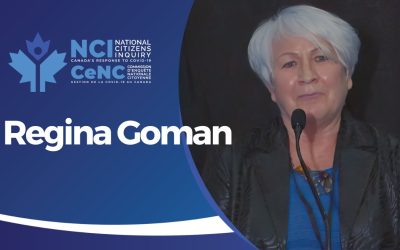FREDERICTON (CP) — A report commissioned by the Atlantic premiers has dismissed the idea of a public auto insurance system for the region.
The report, released Friday by the Atlantic Canada Insurance Harmonization Task Force, said a public system would be costly and deliver few benefits to the four provinces where soaring premiums have become a political sore point.
The task force, appointed in June by the premiers to deflect widespread public complaints, does recommend a harmonized, regional regulator instead of the four separate bodies currently in place.
The task force also said the Atlantic premiers are moving in the right direction by capping insurance awards for minor, soft-tissue injuries, such as strains and sprains.
“The motoring public should be made aware that the recent legislative initiatives will promote stability in the short and medium term, even while individual motorists may not instantly see the effects,” the report stated.
However, few motorists in New Brunswick have seen a decline in their premiums even though the Conservative government under Premier Bernard Lord brought in a $2,500 cap on minor, soft-tissue injuries.
Lord barely clung to power after a provincial election in June, which was dominated by debate over the auto insurance issue.
Lord said the report doesn’t negate the work of a recently appointed legislature committee in the province which is studying the public insurance option.
But the New Brunswick premier said the task force report seems to close the door on the option of a regional corporation.
“This may make a regional system unlikely,” Lord said. “I’ll have to sit down with my colleagues at a meeting of the Atlantic premiers.”
The premiers will meet later this fall to discuss the report.
Ron Russell, Nova Scotia’s minister in charge of insurance, said he isn’t surprised the task force dismissed public insurance.
He said the private system can be fixed.
“What we’ve said is we’ve looked at both systems and in Nova Scotia we’ve decided this (private insurance) is the best way to go.”
P.E.I. Premier Pat Binns said the report concludes the provinces should steer clear of a public system.
“Their advice is that there is no absolute gains here, that really what it boils down to is the extent of injury loss paid out to people that determines the rate,” said Binns.
“Which would probably lead us to look very hard at ‘OK, how do we make sure that people can still have affordable insurance, but yet the payouts are not unreasonable or at least within affordability of most people?'”
Binns said his government is proceeding with its original plan to introduce legislation to put a cap of $2,500 on soft-tissue injuries. New legislation will also regulate the rates charged by auto insurance companies on the Island.
Meanwhile, the task force confirmed it used reports and background provided by the insurance industry.
The report says that, at best, a public system similar to the ones in Saskatchewan, Manitoba and British Columbia, might result in a 10 per cent premium reduction for Atlantic drivers.
While producing little savings for motorists, it would result in a significant loss in revenue, in terms of corporate and premium taxes, for the provincial governments — roughly $200 million across the region.
The task force said the potential loss for each province would be: $61.3 million in Nova Scotia; $71 million in New Brunswick; $60.5 million in Newfoundland and Labrador and $5.6 million in Prince Edward Island.
“The . . . weight of the evidence is against the proposition that . . . a sole supplier for all or any of the Atlantic provinces would produce effective long-term reduction of auto insurance premiums,” the report states.
The task force says no matter what type of auto insurance model is considered, the main reason for rising premiums is the increase in payouts for bodily injuries.
The four premiers ordered the report earlier this year as part of their response to skyrocketing premiums, which have left voters in a bad mood.
The task force said a harmonized regulatory review board could be created to monitor auto insurance issues in all four provinces.
It says such a board would have representation from each province and would have the statutory authority to act when insurance companies fail to act in the spirit and intent of new legislation aimed at protecting the motoring public.
The recommendations likely will be well received by the insurance industry.
Don Forgeron, Atlantic spokesman for the Insurance Bureau of Canada, has said the industry has been working with the four governments for at least the past eight years, trying to develop a more harmonized system.
“The four insurance acts are virtually identical, but there are enough differences that it means four different regulatory regimes,” Forgeron said.
“If there’s an opportunity to streamline that and reduce costs, ultimately consumers will benefit from a more competitive marketplace.”


